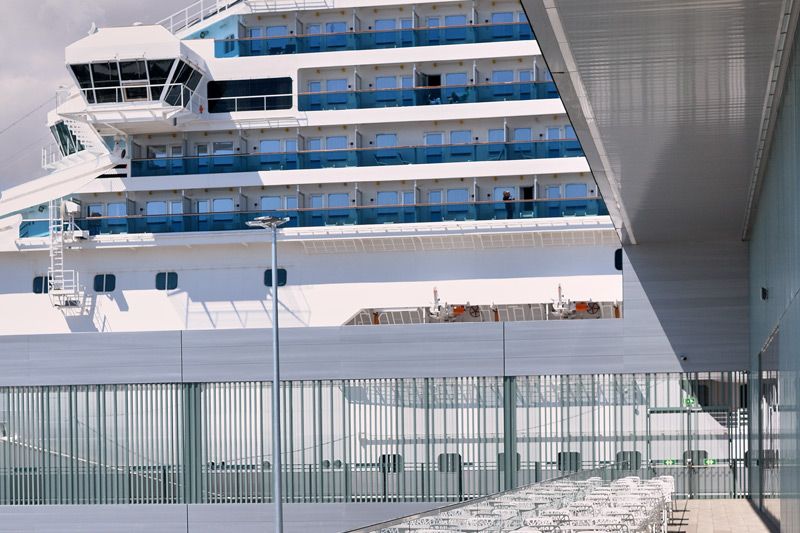PortMiami and the Port of Barcelona see the most cruise-passenger traffic in the world and in Europe, respectively. In 2018, the Port of Barcelona welcomed more than three million passengers on board 838 cruises. The figures for PortMiami topped five and a half million. These numbers demonstrate the importance of adopting models for efficiently managing the flow of passengers and justify the opening of a latest-generation terminal in each destination: Helix Cruise Center and Crown of Miami.
The Helix Cruise Center opened its doors in May 2018. It is the second Carnival Corporation & PLC terminal in the Port of Barcelona: 12,500 square metres to welcome vessels operated by eight of the company’s brands and, according to forecasts, more than one million passengers each year. “Our goal isn’t to grow; it’s to give our passengers the best service possible,” notes Sandra Yunta, general manager and PFSO of the Barcelona Cruise Terminal. “We’re making sure that, if the group’s vessels come into port on the same day, they have two terminals available (Helix Cruise Center and Palacruceros), where we can implement our quality standards.”
Construction of the new terminal was based on three main principles: functionality, optimising maintenance and natural light. “The terminal had to be versatile enough to accommodate changes in flow and allow us to implement new technology,” explains Yunta. “The new terminal is spectacular, but over the course of the year, maintenance is much cheaper than for other terminals.” Natural light systems, north-facing skylights and glass near ground level are some of the solutions that help cut power and climate-control costs. These measures are also in line with the UN goal of doubling the global rate of improvement in energy efficiency by 2030.
Thanks to these characteristics, the Helix Cruise Center was also chosen as one of the best passenger terminals in the world by 2019 Prix Versailles, the global architecture and design awards given out by the UNESCO and the International Union of Architects.
 Third generation terminal designed by Batlle i Roig Arquitectura and built by the UTE Vopi4 - Elecnor. [Image by Port de Barcelona website]
Third generation terminal designed by Batlle i Roig Arquitectura and built by the UTE Vopi4 - Elecnor. [Image by Port de Barcelona website]
 Third generation terminal designed by Batlle i Roig Arquitectura and built by the UTE Vopi4 - Elecnor. [Image by Port de Barcelona website]
Third generation terminal designed by Batlle i Roig Arquitectura and built by the UTE Vopi4 - Elecnor. [Image by Port de Barcelona website]






